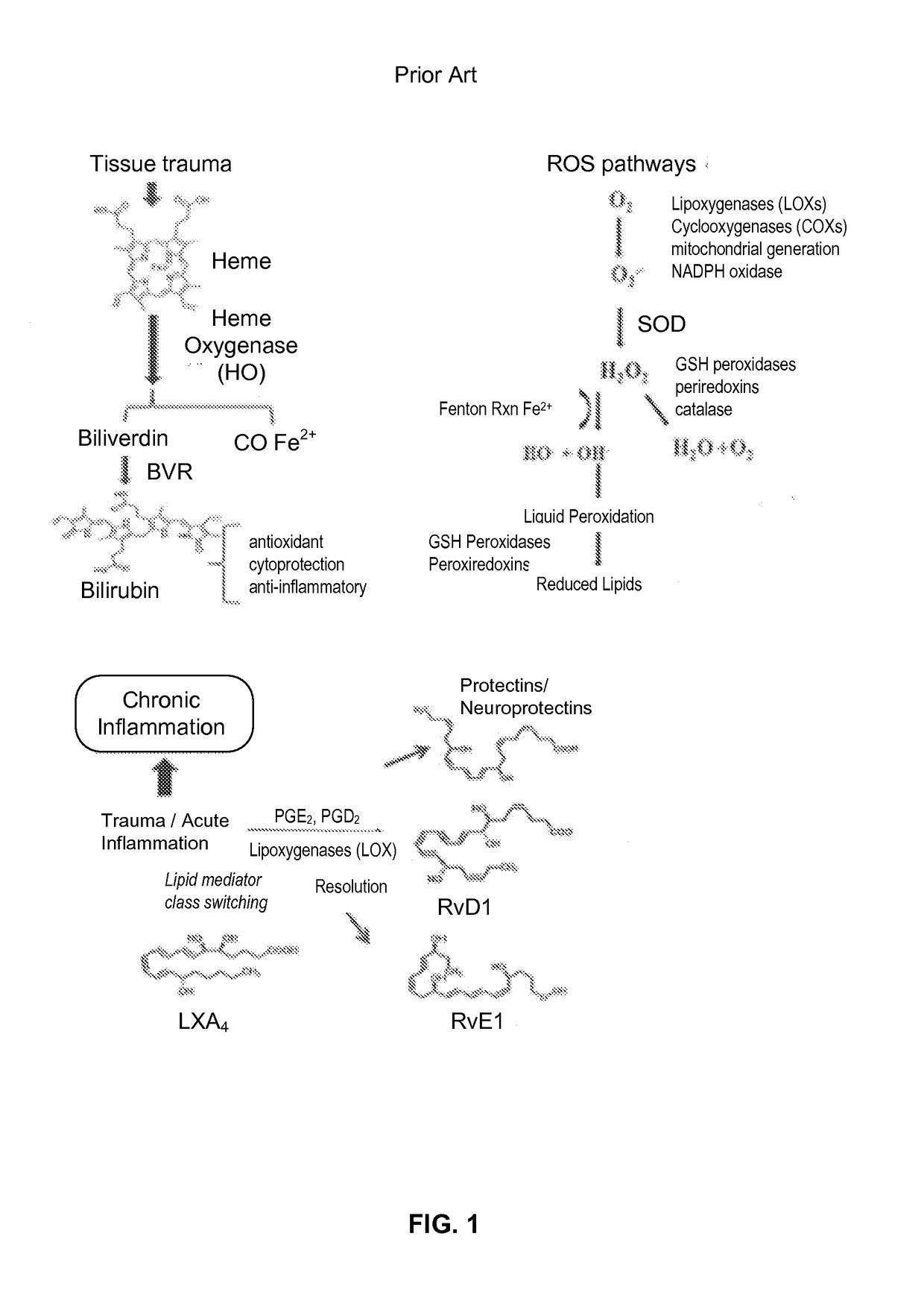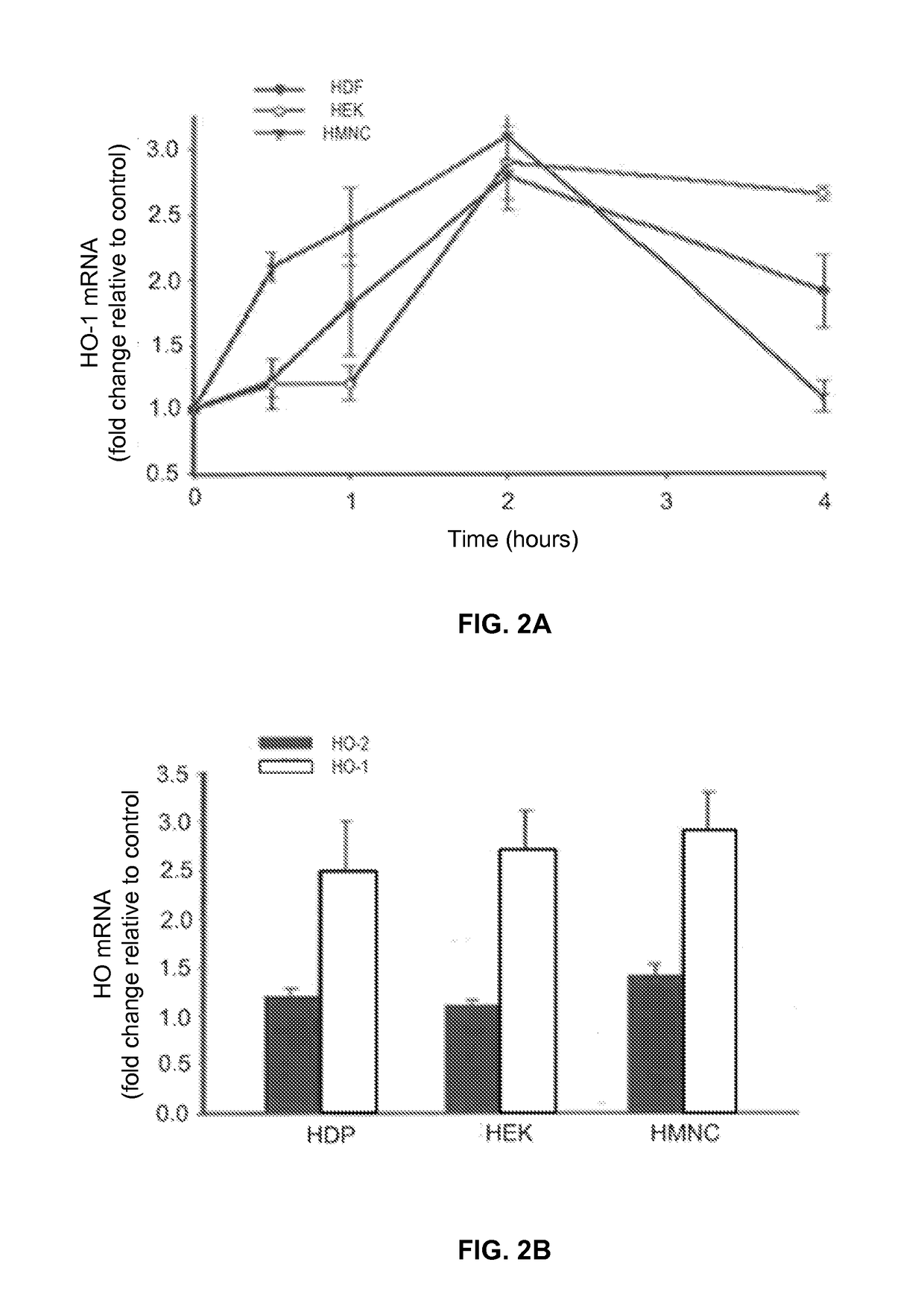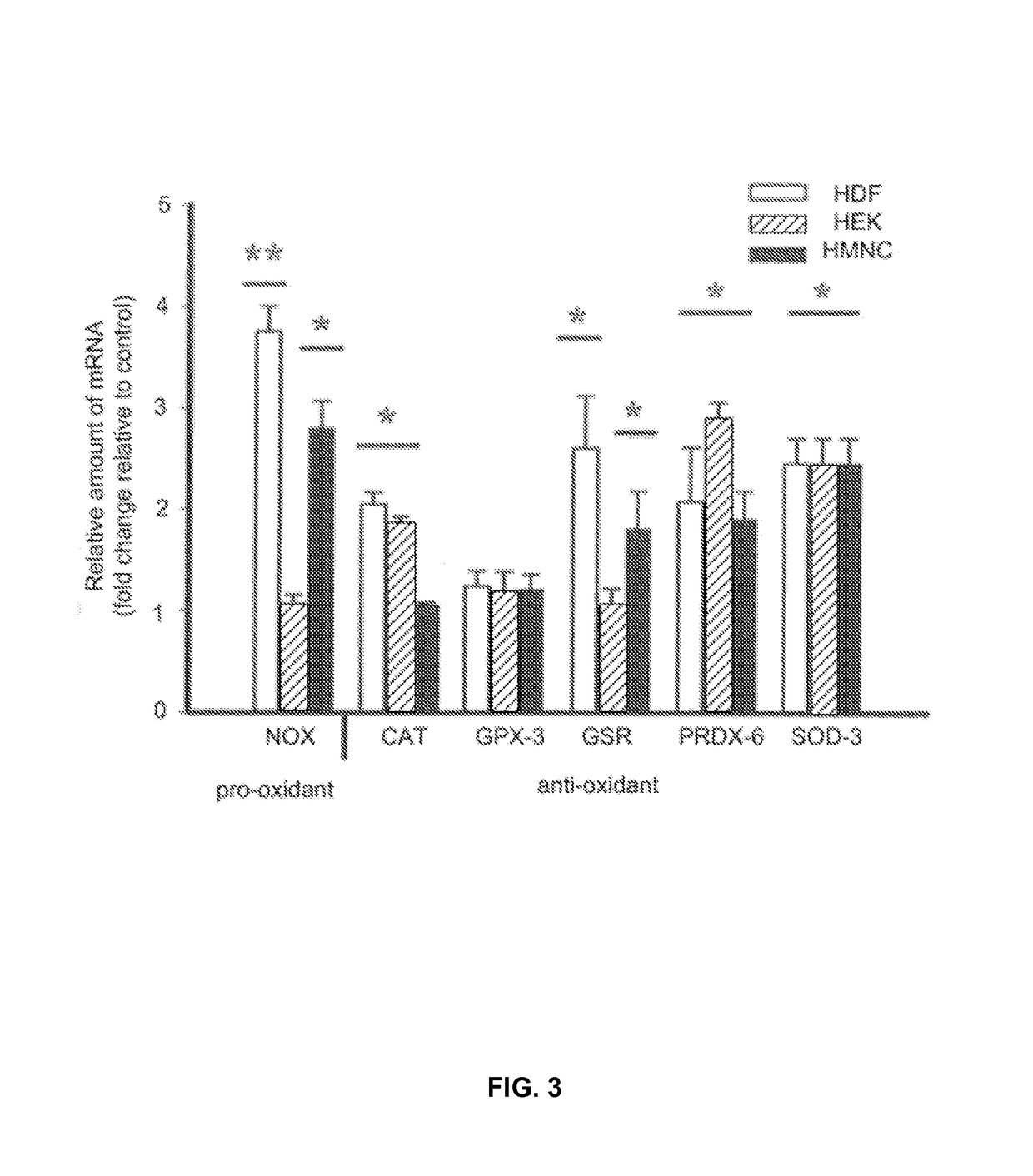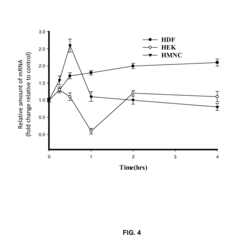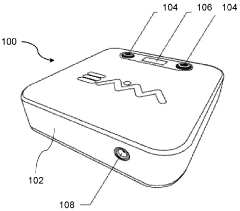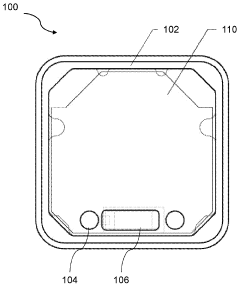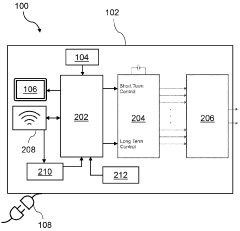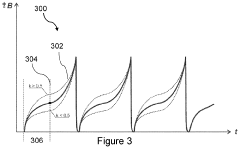The Role of PEMF Therapy in Enhancing Neurogenesis
AUG 11, 20259 MIN READ
Generate Your Research Report Instantly with AI Agent
Patsnap Eureka helps you evaluate technical feasibility & market potential.
PEMF and Neurogenesis: Background and Objectives
Pulsed Electromagnetic Field (PEMF) therapy has emerged as a promising non-invasive treatment modality in recent years, with potential applications in various medical fields. The focus of this technical research report is to explore the role of PEMF therapy in enhancing neurogenesis, a process crucial for brain health and cognitive function.
Neurogenesis, the formation of new neurons in the brain, was once thought to cease after early development. However, recent research has revealed that it continues throughout adulthood in specific brain regions, particularly the hippocampus. This discovery has opened up new avenues for potential treatments of neurological disorders and cognitive decline associated with aging.
PEMF therapy involves the application of low-frequency electromagnetic fields to biological tissues. Its effects on cellular processes have been studied extensively, with evidence suggesting that it can influence cell membrane potential, ion transport, and various signaling pathways. The potential of PEMF to modulate neuronal activity and promote neuroplasticity has sparked interest in its application for enhancing neurogenesis.
The historical development of PEMF therapy can be traced back to the mid-20th century, with early applications in bone healing. Over the decades, research has expanded to explore its effects on various physiological processes, including those in the nervous system. The convergence of PEMF technology and neuroscience has led to the current focus on its potential to stimulate neurogenesis.
Recent technological advancements have enabled more precise control over PEMF parameters, such as frequency, intensity, and waveform. This has allowed researchers to investigate optimal settings for targeting specific biological processes, including those involved in neurogenesis. The non-invasive nature of PEMF therapy makes it an attractive option for potential long-term use in promoting brain health.
The primary objective of this technical research is to comprehensively evaluate the current state of knowledge regarding PEMF therapy's role in enhancing neurogenesis. This includes examining the underlying mechanisms, assessing the efficacy of different PEMF protocols, and identifying potential applications in both clinical and non-clinical settings.
Furthermore, this report aims to explore the broader implications of PEMF-enhanced neurogenesis for cognitive function, mental health, and neurological disorders. By analyzing existing studies and ongoing research, we seek to identify promising directions for future investigations and potential therapeutic applications.
Neurogenesis, the formation of new neurons in the brain, was once thought to cease after early development. However, recent research has revealed that it continues throughout adulthood in specific brain regions, particularly the hippocampus. This discovery has opened up new avenues for potential treatments of neurological disorders and cognitive decline associated with aging.
PEMF therapy involves the application of low-frequency electromagnetic fields to biological tissues. Its effects on cellular processes have been studied extensively, with evidence suggesting that it can influence cell membrane potential, ion transport, and various signaling pathways. The potential of PEMF to modulate neuronal activity and promote neuroplasticity has sparked interest in its application for enhancing neurogenesis.
The historical development of PEMF therapy can be traced back to the mid-20th century, with early applications in bone healing. Over the decades, research has expanded to explore its effects on various physiological processes, including those in the nervous system. The convergence of PEMF technology and neuroscience has led to the current focus on its potential to stimulate neurogenesis.
Recent technological advancements have enabled more precise control over PEMF parameters, such as frequency, intensity, and waveform. This has allowed researchers to investigate optimal settings for targeting specific biological processes, including those involved in neurogenesis. The non-invasive nature of PEMF therapy makes it an attractive option for potential long-term use in promoting brain health.
The primary objective of this technical research is to comprehensively evaluate the current state of knowledge regarding PEMF therapy's role in enhancing neurogenesis. This includes examining the underlying mechanisms, assessing the efficacy of different PEMF protocols, and identifying potential applications in both clinical and non-clinical settings.
Furthermore, this report aims to explore the broader implications of PEMF-enhanced neurogenesis for cognitive function, mental health, and neurological disorders. By analyzing existing studies and ongoing research, we seek to identify promising directions for future investigations and potential therapeutic applications.
Market Analysis for PEMF Neurotherapeutics
The market for PEMF (Pulsed Electromagnetic Field) neurotherapeutics is experiencing significant growth, driven by increasing awareness of non-invasive treatment options for neurological disorders and the growing prevalence of conditions such as Alzheimer's disease, Parkinson's disease, and depression. The global PEMF therapy market, which includes neurological applications, is projected to expand substantially over the next decade.
Several factors contribute to the rising demand for PEMF neurotherapeutics. Firstly, the aging population in many developed countries is leading to a higher incidence of age-related neurological disorders, creating a larger potential patient base. Secondly, there is a growing preference for non-pharmacological treatments that offer fewer side effects compared to traditional medications, making PEMF therapy an attractive option for both patients and healthcare providers.
The market for PEMF devices specifically targeting neurogenesis and brain health is still in its early stages but shows promising growth potential. As research continues to demonstrate the efficacy of PEMF therapy in enhancing neurogenesis and improving cognitive function, the demand for these devices is expected to increase in both clinical and consumer settings.
In the clinical segment, hospitals and specialized neurological treatment centers are increasingly incorporating PEMF therapy into their treatment protocols. This adoption is driven by the growing body of evidence supporting PEMF's effectiveness in neurological rehabilitation and its potential to complement existing therapies.
The consumer market for PEMF neurotherapeutics is also expanding, with a rise in home-use devices targeting brain health and cognitive enhancement. This segment is particularly appealing to health-conscious individuals seeking non-invasive methods to support brain function and potentially prevent age-related cognitive decline.
Geographically, North America and Europe currently dominate the PEMF neurotherapeutics market, owing to advanced healthcare infrastructure, higher awareness of alternative therapies, and greater investment in research and development. However, the Asia-Pacific region is expected to witness the fastest growth in the coming years, driven by improving healthcare access, rising disposable incomes, and increasing adoption of Western medical technologies.
Despite the positive outlook, the PEMF neurotherapeutics market faces challenges such as the need for more extensive clinical trials to validate long-term efficacy, regulatory hurdles in some regions, and the relatively high cost of advanced PEMF devices. Overcoming these barriers will be crucial for the market to reach its full potential and for PEMF therapy to become a mainstream treatment option in neurology.
Several factors contribute to the rising demand for PEMF neurotherapeutics. Firstly, the aging population in many developed countries is leading to a higher incidence of age-related neurological disorders, creating a larger potential patient base. Secondly, there is a growing preference for non-pharmacological treatments that offer fewer side effects compared to traditional medications, making PEMF therapy an attractive option for both patients and healthcare providers.
The market for PEMF devices specifically targeting neurogenesis and brain health is still in its early stages but shows promising growth potential. As research continues to demonstrate the efficacy of PEMF therapy in enhancing neurogenesis and improving cognitive function, the demand for these devices is expected to increase in both clinical and consumer settings.
In the clinical segment, hospitals and specialized neurological treatment centers are increasingly incorporating PEMF therapy into their treatment protocols. This adoption is driven by the growing body of evidence supporting PEMF's effectiveness in neurological rehabilitation and its potential to complement existing therapies.
The consumer market for PEMF neurotherapeutics is also expanding, with a rise in home-use devices targeting brain health and cognitive enhancement. This segment is particularly appealing to health-conscious individuals seeking non-invasive methods to support brain function and potentially prevent age-related cognitive decline.
Geographically, North America and Europe currently dominate the PEMF neurotherapeutics market, owing to advanced healthcare infrastructure, higher awareness of alternative therapies, and greater investment in research and development. However, the Asia-Pacific region is expected to witness the fastest growth in the coming years, driven by improving healthcare access, rising disposable incomes, and increasing adoption of Western medical technologies.
Despite the positive outlook, the PEMF neurotherapeutics market faces challenges such as the need for more extensive clinical trials to validate long-term efficacy, regulatory hurdles in some regions, and the relatively high cost of advanced PEMF devices. Overcoming these barriers will be crucial for the market to reach its full potential and for PEMF therapy to become a mainstream treatment option in neurology.
Current PEMF Technology and Neurological Challenges
Pulsed Electromagnetic Field (PEMF) therapy has emerged as a promising non-invasive treatment for various neurological conditions. However, the current state of PEMF technology faces several challenges in its application to neurogenesis enhancement. One of the primary obstacles is the optimization of PEMF parameters, including frequency, intensity, and duration, to effectively stimulate neuronal growth and differentiation.
The complexity of the nervous system and the intricate mechanisms involved in neurogenesis pose significant hurdles for PEMF therapy. Researchers are grappling with the task of precisely targeting specific brain regions and neural pathways to promote neurogenesis without causing unintended effects on surrounding tissues. This requires a deep understanding of both the neurological processes and the electromagnetic field interactions at the cellular level.
Another challenge lies in the development of PEMF devices that can deliver consistent and controlled electromagnetic fields to the brain. Current technologies often struggle with penetration depth and uniformity of field distribution, particularly when targeting deep brain structures. Engineers are working on innovative coil designs and field-shaping techniques to overcome these limitations and improve the efficacy of PEMF therapy for neurological applications.
The variability in individual responses to PEMF therapy presents an additional hurdle. Factors such as age, genetic predisposition, and existing neurological conditions can significantly influence the effectiveness of PEMF-induced neurogenesis. This necessitates the development of personalized treatment protocols and adaptive PEMF systems that can adjust parameters based on real-time feedback from the patient's neural activity.
Safety concerns also pose challenges in the widespread adoption of PEMF therapy for neurogenesis enhancement. While PEMF is generally considered safe, long-term effects of repeated exposure to electromagnetic fields on brain tissue are not fully understood. Rigorous safety studies and standardized protocols are needed to address these concerns and establish PEMF as a reliable therapeutic option for neurological disorders.
The integration of PEMF technology with other neuroimaging and neuromodulation techniques presents both opportunities and challenges. Combining PEMF with techniques such as fMRI or EEG could provide valuable insights into the mechanisms of action and allow for more precise targeting of neurogenic regions. However, the technical complexities of such integrations and the potential for electromagnetic interference between different systems need to be carefully addressed.
As research in this field progresses, there is a growing need for standardization of PEMF protocols and reporting methods. The current lack of consistency in experimental designs and outcome measures makes it difficult to compare results across studies and draw definitive conclusions about the efficacy of PEMF therapy in enhancing neurogenesis. Establishing standardized guidelines for PEMF research in neurology is crucial for advancing the field and translating findings into clinical applications.
The complexity of the nervous system and the intricate mechanisms involved in neurogenesis pose significant hurdles for PEMF therapy. Researchers are grappling with the task of precisely targeting specific brain regions and neural pathways to promote neurogenesis without causing unintended effects on surrounding tissues. This requires a deep understanding of both the neurological processes and the electromagnetic field interactions at the cellular level.
Another challenge lies in the development of PEMF devices that can deliver consistent and controlled electromagnetic fields to the brain. Current technologies often struggle with penetration depth and uniformity of field distribution, particularly when targeting deep brain structures. Engineers are working on innovative coil designs and field-shaping techniques to overcome these limitations and improve the efficacy of PEMF therapy for neurological applications.
The variability in individual responses to PEMF therapy presents an additional hurdle. Factors such as age, genetic predisposition, and existing neurological conditions can significantly influence the effectiveness of PEMF-induced neurogenesis. This necessitates the development of personalized treatment protocols and adaptive PEMF systems that can adjust parameters based on real-time feedback from the patient's neural activity.
Safety concerns also pose challenges in the widespread adoption of PEMF therapy for neurogenesis enhancement. While PEMF is generally considered safe, long-term effects of repeated exposure to electromagnetic fields on brain tissue are not fully understood. Rigorous safety studies and standardized protocols are needed to address these concerns and establish PEMF as a reliable therapeutic option for neurological disorders.
The integration of PEMF technology with other neuroimaging and neuromodulation techniques presents both opportunities and challenges. Combining PEMF with techniques such as fMRI or EEG could provide valuable insights into the mechanisms of action and allow for more precise targeting of neurogenic regions. However, the technical complexities of such integrations and the potential for electromagnetic interference between different systems need to be carefully addressed.
As research in this field progresses, there is a growing need for standardization of PEMF protocols and reporting methods. The current lack of consistency in experimental designs and outcome measures makes it difficult to compare results across studies and draw definitive conclusions about the efficacy of PEMF therapy in enhancing neurogenesis. Establishing standardized guidelines for PEMF research in neurology is crucial for advancing the field and translating findings into clinical applications.
PEMF Protocols for Neurogenesis Stimulation
01 PEMF therapy for promoting neurogenesis
Pulsed electromagnetic field (PEMF) therapy can be used to stimulate neurogenesis, which is the process of generating new neurons in the brain. This therapy involves applying electromagnetic fields to specific areas of the brain to enhance neural stem cell proliferation and differentiation, potentially improving cognitive function and neurological recovery.- PEMF therapy for promoting neurogenesis: Pulsed electromagnetic field (PEMF) therapy has been found to stimulate neurogenesis, which is the process of generating new neurons in the brain. This therapy can potentially enhance cognitive function, memory, and overall brain health by promoting the growth and development of new neural cells.
- PEMF devices for neurological treatment: Specialized PEMF devices have been developed for the treatment of various neurological conditions. These devices generate specific electromagnetic field patterns that can penetrate the brain tissue, potentially stimulating neural activity and promoting healing in damaged areas of the nervous system.
- Combination of PEMF with stem cell therapy: Research has explored the synergistic effects of combining PEMF therapy with stem cell treatments to enhance neurogenesis. This approach aims to create an optimal environment for stem cell differentiation and integration into neural networks, potentially improving outcomes in neurological disorders.
- PEMF protocols for specific neurological conditions: Tailored PEMF protocols have been developed to target specific neurological conditions such as Alzheimer's disease, Parkinson's disease, and stroke recovery. These protocols involve optimized frequency, intensity, and duration of PEMF exposure to maximize neurogenesis and neuroprotective effects in the affected brain regions.
- Mechanisms of PEMF-induced neurogenesis: Studies have investigated the underlying mechanisms by which PEMF therapy promotes neurogenesis. These mechanisms may include the modulation of gene expression, activation of growth factors, enhancement of synaptic plasticity, and regulation of neurotransmitter systems, all contributing to the formation and integration of new neurons in the brain.
02 PEMF devices for neurological treatment
Specialized PEMF devices are designed for neurological treatments, targeting various brain regions to promote neurogenesis and improve brain function. These devices may incorporate specific coil configurations, frequency ranges, and treatment protocols optimized for neurological applications.Expand Specific Solutions03 Combination of PEMF with stem cell therapy
PEMF therapy can be combined with stem cell treatments to enhance neurogenesis. The electromagnetic fields may help guide stem cell differentiation and integration into neural networks, potentially improving the efficacy of stem cell-based therapies for neurological disorders.Expand Specific Solutions04 PEMF-induced neuroprotection and regeneration
PEMF therapy can provide neuroprotective effects and promote regeneration of neural tissues. This may involve modulating inflammatory responses, enhancing neurotrophic factor expression, and stimulating the growth of new neural connections, potentially benefiting patients with neurodegenerative diseases or brain injuries.Expand Specific Solutions05 PEMF therapy for cognitive enhancement
PEMF therapy can be applied to enhance cognitive functions by promoting neurogenesis in specific brain regions. This approach may improve memory, learning, and overall cognitive performance, with potential applications in treating age-related cognitive decline and neurodegenerative disorders.Expand Specific Solutions
Key Players in PEMF Neurotherapy Research
The field of PEMF therapy in enhancing neurogenesis is in its early growth stage, with increasing research interest but limited market penetration. The global market size for PEMF devices is projected to expand significantly in the coming years, driven by growing applications in neuroscience and regenerative medicine. Technologically, PEMF therapy is still evolving, with companies like SofPulse, Venus Concept, and Regenesis Biomedical leading commercial development. Academic institutions such as Northwestern University, Kyushu University, and the National University of Singapore are contributing to the fundamental research, while biotechnology firms like FibroGen and Seneca Biopharma are exploring potential therapeutic applications. The collaboration between industry and academia is crucial for advancing the technology's efficacy and clinical adoption.
Northwestern University
Technical Solution: Northwestern University has developed a novel PEMF therapy approach for enhancing neurogenesis. Their research focuses on using specific PEMF frequencies and intensities to stimulate neural stem cells and promote the growth of new neurons. The university's team has demonstrated that PEMF exposure can increase the proliferation of neural progenitor cells by up to 80% in vitro [1]. They have also shown that PEMF therapy can enhance the migration and differentiation of newly formed neurons in animal models of neurodegenerative diseases [2]. The university is currently conducting clinical trials to evaluate the efficacy of their PEMF protocols in treating conditions such as Alzheimer's disease and stroke recovery [3].
Strengths: Strong scientific foundation, promising preclinical results, and ongoing clinical trials. Weaknesses: Limited commercial application and potential regulatory hurdles for medical device approval.
Kyushu University
Technical Solution: Kyushu University has developed a unique PEMF therapy system that combines pulsed electromagnetic fields with targeted drug delivery to enhance neurogenesis. Their approach involves using PEMF to temporarily increase the permeability of the blood-brain barrier, allowing for more efficient delivery of neurotropic factors and stem cells to the brain [4]. The university's research has shown that this combined therapy can increase neurogenesis rates by up to 60% compared to traditional PEMF therapy alone [5]. They have also demonstrated improved functional recovery in animal models of traumatic brain injury and stroke when using this dual approach [6].
Strengths: Innovative combination of PEMF and drug delivery, potential for enhanced therapeutic effects. Weaknesses: Increased complexity of treatment, potential safety concerns with blood-brain barrier manipulation.
Breakthrough Studies on PEMF-Induced Neurogenesis
Treatment of conditions susceptible to pulsed electromagnetic field therapy
PatentActiveUS20170354830A1
Innovation
- PEMF therapy is administered to modulate gene expression associated with inflammation pathways, including heme oxygenase, antioxidant enzymes, lipid mediator biosynthesis, and cytokines, using specific parameters such as electric field strength, pulse rate, and duration to produce measurable clinical effects on pain, nerve function, and wound healing.
A pulsed electromagnetic field apparatus and method for generating frequencies
PatentWO2024127242A1
Innovation
- A PEMF apparatus with a pulse generator and electromagnetic field generation means that uses modified sawtooth waveforms with pre-stress and relaxation periods, and quasi-sine signals with pulse width modulation, along with a feedback circuit for frequency stability and precision, and a bifilar antenna for scalar wave generation.
Safety and Regulatory Considerations for PEMF Devices
The safety and regulatory considerations for Pulsed Electromagnetic Field (PEMF) devices are crucial aspects that require thorough examination, especially in the context of their potential role in enhancing neurogenesis. As these devices emit electromagnetic fields, ensuring their safety for human use is paramount.
Regulatory bodies such as the Food and Drug Administration (FDA) in the United States and the European Medicines Agency (EMA) in Europe have established guidelines for the development, testing, and marketing of PEMF devices. These regulations aim to protect consumers while promoting innovation in medical technology.
One of the primary safety concerns is the potential for electromagnetic interference with other medical devices, particularly implanted electronic devices like pacemakers or insulin pumps. Manufacturers must conduct rigorous testing to demonstrate that their PEMF devices do not adversely affect the functioning of other medical equipment.
Exposure limits to electromagnetic fields are another critical consideration. International organizations like the International Commission on Non-Ionizing Radiation Protection (ICNIRP) provide guidelines on safe exposure levels. PEMF device manufacturers must ensure their products operate within these established limits to prevent potential health risks associated with excessive electromagnetic field exposure.
Clinical trials play a vital role in establishing the safety profile of PEMF devices. These trials must adhere to Good Clinical Practice (GCP) guidelines and be designed to detect both short-term and long-term adverse effects. The results of these trials are crucial for obtaining regulatory approval and building consumer confidence.
Quality control in manufacturing is essential to maintain consistent safety standards. Regulatory bodies often require manufacturers to implement quality management systems that comply with standards such as ISO 13485 for medical devices. This ensures that each device meets the specified safety and performance criteria.
Labeling and user instructions are also subject to regulatory scrutiny. Clear, accurate, and comprehensive information must be provided to users, including potential risks, contraindications, and proper usage guidelines. This information is critical for ensuring the safe and effective use of PEMF devices in both clinical and home settings.
Post-market surveillance is an ongoing requirement for PEMF device manufacturers. This involves monitoring the performance and safety of devices after they have been released to the market, allowing for the detection of any unforeseen issues and prompt corrective actions if necessary.
As research into the role of PEMF therapy in enhancing neurogenesis progresses, regulatory frameworks may need to evolve to address new findings and applications. This could involve updating safety standards, refining testing protocols, or establishing new categories for neurogenesis-specific PEMF devices.
Regulatory bodies such as the Food and Drug Administration (FDA) in the United States and the European Medicines Agency (EMA) in Europe have established guidelines for the development, testing, and marketing of PEMF devices. These regulations aim to protect consumers while promoting innovation in medical technology.
One of the primary safety concerns is the potential for electromagnetic interference with other medical devices, particularly implanted electronic devices like pacemakers or insulin pumps. Manufacturers must conduct rigorous testing to demonstrate that their PEMF devices do not adversely affect the functioning of other medical equipment.
Exposure limits to electromagnetic fields are another critical consideration. International organizations like the International Commission on Non-Ionizing Radiation Protection (ICNIRP) provide guidelines on safe exposure levels. PEMF device manufacturers must ensure their products operate within these established limits to prevent potential health risks associated with excessive electromagnetic field exposure.
Clinical trials play a vital role in establishing the safety profile of PEMF devices. These trials must adhere to Good Clinical Practice (GCP) guidelines and be designed to detect both short-term and long-term adverse effects. The results of these trials are crucial for obtaining regulatory approval and building consumer confidence.
Quality control in manufacturing is essential to maintain consistent safety standards. Regulatory bodies often require manufacturers to implement quality management systems that comply with standards such as ISO 13485 for medical devices. This ensures that each device meets the specified safety and performance criteria.
Labeling and user instructions are also subject to regulatory scrutiny. Clear, accurate, and comprehensive information must be provided to users, including potential risks, contraindications, and proper usage guidelines. This information is critical for ensuring the safe and effective use of PEMF devices in both clinical and home settings.
Post-market surveillance is an ongoing requirement for PEMF device manufacturers. This involves monitoring the performance and safety of devices after they have been released to the market, allowing for the detection of any unforeseen issues and prompt corrective actions if necessary.
As research into the role of PEMF therapy in enhancing neurogenesis progresses, regulatory frameworks may need to evolve to address new findings and applications. This could involve updating safety standards, refining testing protocols, or establishing new categories for neurogenesis-specific PEMF devices.
Integrating PEMF with Other Neurotherapeutic Approaches
The integration of Pulsed Electromagnetic Field (PEMF) therapy with other neurotherapeutic approaches presents a promising avenue for enhancing neurogenesis and overall brain health. This synergistic approach leverages the strengths of multiple modalities to potentially amplify the benefits of each individual treatment.
One key area of integration is combining PEMF therapy with cognitive training exercises. By applying PEMF stimulation during or immediately before cognitive tasks, researchers hypothesize that the increased neural plasticity induced by PEMF may enhance the efficacy of cognitive training. This combination could lead to improved cognitive performance and potentially accelerate the formation of new neural connections.
Another promising integration is the use of PEMF therapy alongside neurofeedback techniques. Neurofeedback helps individuals learn to self-regulate their brain activity, and when coupled with PEMF, it may enhance the brain's ability to achieve and maintain desired states. This combined approach could potentially lead to more rapid and lasting improvements in neuroplasticity and cognitive function.
PEMF therapy also shows potential for enhancing the effects of pharmacological interventions aimed at promoting neurogenesis. For instance, when used in conjunction with medications that stimulate the production of neurotrophic factors, PEMF might amplify the neurogenic response, leading to more robust outcomes in terms of neural growth and repair.
In the realm of neurorehabilitation, PEMF therapy could be integrated with physical therapy and occupational therapy protocols. By applying PEMF stimulation to specific brain regions before or during rehabilitation exercises, therapists may be able to enhance neural plasticity and potentially accelerate recovery in patients with neurological injuries or disorders.
Furthermore, the combination of PEMF therapy with non-invasive brain stimulation techniques, such as transcranial magnetic stimulation (TMS) or transcranial direct current stimulation (tDCS), is an area of growing interest. These combined approaches may offer complementary benefits, with PEMF potentially enhancing the neuroplastic effects of other stimulation methods.
Lastly, integrating PEMF therapy with mindfulness and meditation practices could yield interesting results. The relaxation and stress-reduction effects of meditation, when combined with the neurogenic potential of PEMF, may create a powerful synergy for promoting brain health and cognitive well-being.
As research in this field progresses, it is crucial to conduct rigorous clinical trials to evaluate the safety and efficacy of these integrated approaches. The potential for PEMF therapy to enhance and complement other neurotherapeutic interventions holds great promise for advancing the field of neuroscience and improving outcomes for individuals with neurological conditions.
One key area of integration is combining PEMF therapy with cognitive training exercises. By applying PEMF stimulation during or immediately before cognitive tasks, researchers hypothesize that the increased neural plasticity induced by PEMF may enhance the efficacy of cognitive training. This combination could lead to improved cognitive performance and potentially accelerate the formation of new neural connections.
Another promising integration is the use of PEMF therapy alongside neurofeedback techniques. Neurofeedback helps individuals learn to self-regulate their brain activity, and when coupled with PEMF, it may enhance the brain's ability to achieve and maintain desired states. This combined approach could potentially lead to more rapid and lasting improvements in neuroplasticity and cognitive function.
PEMF therapy also shows potential for enhancing the effects of pharmacological interventions aimed at promoting neurogenesis. For instance, when used in conjunction with medications that stimulate the production of neurotrophic factors, PEMF might amplify the neurogenic response, leading to more robust outcomes in terms of neural growth and repair.
In the realm of neurorehabilitation, PEMF therapy could be integrated with physical therapy and occupational therapy protocols. By applying PEMF stimulation to specific brain regions before or during rehabilitation exercises, therapists may be able to enhance neural plasticity and potentially accelerate recovery in patients with neurological injuries or disorders.
Furthermore, the combination of PEMF therapy with non-invasive brain stimulation techniques, such as transcranial magnetic stimulation (TMS) or transcranial direct current stimulation (tDCS), is an area of growing interest. These combined approaches may offer complementary benefits, with PEMF potentially enhancing the neuroplastic effects of other stimulation methods.
Lastly, integrating PEMF therapy with mindfulness and meditation practices could yield interesting results. The relaxation and stress-reduction effects of meditation, when combined with the neurogenic potential of PEMF, may create a powerful synergy for promoting brain health and cognitive well-being.
As research in this field progresses, it is crucial to conduct rigorous clinical trials to evaluate the safety and efficacy of these integrated approaches. The potential for PEMF therapy to enhance and complement other neurotherapeutic interventions holds great promise for advancing the field of neuroscience and improving outcomes for individuals with neurological conditions.
Unlock deeper insights with Patsnap Eureka Quick Research — get a full tech report to explore trends and direct your research. Try now!
Generate Your Research Report Instantly with AI Agent
Supercharge your innovation with Patsnap Eureka AI Agent Platform!
